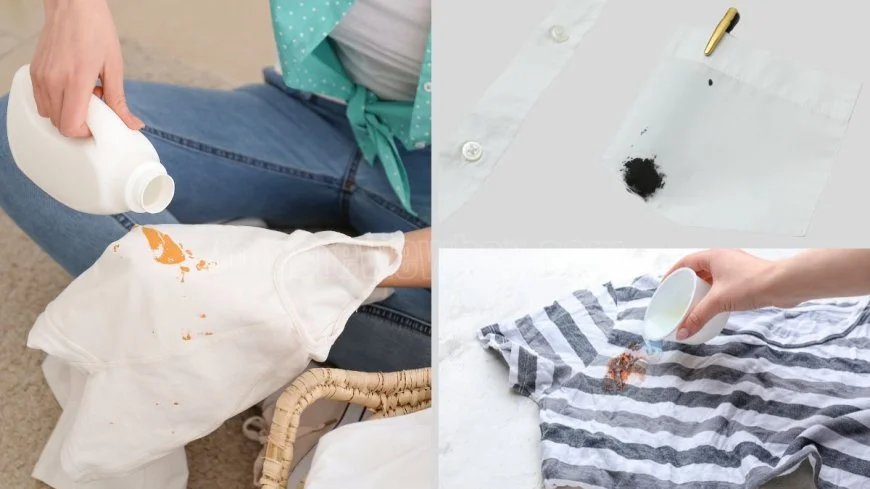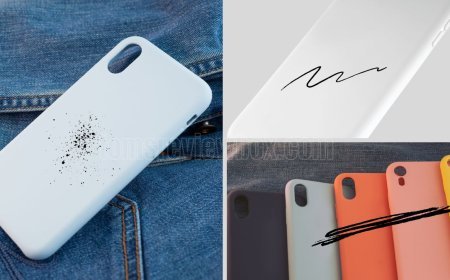How to Remove Pen Ink from White Clothes Without Ruining Them: Fast and Easy!
Discover expert tips & techniques to effectively remove pen ink from white clothes. Say goodbye to stubborn stains with our proven methods!

Accidents happen, and stained clothing from pen ink stains on white clothes can be a nightmare due to fabric discoloration. Knowing how to remove difficult stains like pen ink from white clothes is essential for anyone who wants to use successful stain removal techniques and commercial stain removers to keep their wardrobe looking fresh. This guide will share effective methods to tackle those stubborn stains, including pen ink removal from ink spots, using common household items like white vinegar and a white cloth. From rubbing alcohol to hand sanitizer, you'll discover quick fixes, including diy stain solutions and effective ink removers for different ink stains that save your favorite pieces. Don't let a little ink ruin your day; with the right techniques, you can restore your clothes to their former glory. Say goodbye to panic and hello to clean fabric!
Step-by-Step Ink Removal
Identify Stain Type
Determine the type of ink spot you are dealing with. It could be ballpoint, gel, or permanent ink. Each type requires a different cleaning method. Recognize the fabric type as well. Some materials are delicate and can be damaged during stain removal, especially from permanent ink stains. Assess the age of the stain too. Older stains may need more intensive treatment to remove effectively.
Gather Cleaning Supplies
Collect essential supplies for effective ink removal. Rubbing alcohol works well on most ink types. Hair spray can also help lift stains from fabric. Hand sanitizer is another option due to its alcohol content, unlike a permanent ink stain. Ensure you have paper towels or clean cloths handy for blotting and absorbing ink. Include a good detergent like Tide Ultra Stain Release Liquid for washing after treatment.
Pre-Treat the Stain
Before applying any solvent to remove an ink stain, test it on an inconspicuous area first. This step checks if the fabric is colorfast. Blot the stain gently with a cloth or paper towel. This action lifts excess ink without spreading it further. Allow the solvent to sit on the stain for a few minutes. Follow the instructions on the product label for optimal results before rinsing an ink stain.
Wash and Rinse Thoroughly
Rinse the stained area with cold water. Cold water helps prevent setting the stain further into the fabric. After rinsing, wash the item with the ink stain in your washing machine using the appropriate detergent for that fabric type. Check the stain before drying the clothing item. Heat from dryers can set any remaining ink, making it harder to remove later.
Methods for Different Fabrics
Cotton and Linen Techniques
king cotton in a mixture of dish soap and vinegar can enhance stain lifting. This method works well because vinegar breaks down the ink. Mix one part dish soap with two parts vinegar. Soak the fabric for 30 minutes before rinsing.
Using hair spray treatment is another effective technique. Spray it directly onto the ink stain. The alcohol in the hair spray helps break down the ink's structure. After spraying, let it sit for about five minutes. Wash the item afterward to remove any residue.
Air drying cotton and linen items is crucial. Heat from a dryer can set residual stains. Always check if the stain is completely gone before drying.
Polyester and Nylon Tips
Dripping rubbing alcohol directly onto the stain effectively dissolves the ink. This method works because rubbing alcohol penetrates the ink stain fibers quickly. Apply it liberally to cover the entire stain.
Gently scrubbing the area with a cloth helps lift the stain away. Use a clean, white cloth to avoid transferring colors. Rinse the fabric under cold water after scrubbing to remove any remaining ink.
Washing polyester and nylon items in cold water to remove ink stains is essential. Hot water can damage these synthetic fabrics. Always follow care labels to maintain their integrity and appearance, especially to avoid an ink stain.
Silk and Wool Care
Avoid using harsh chemicals on silk and wool fabrics. Mild soap solutions are safer for treating ink stains. Mix a small amount of mild detergent with water before applying it to the stain.
Testing any cleaning solution on a hidden area for an ink stain is wise. This step prevents potential damage to valuable garments. If there’s no discoloration, apply the solution gently to the stained area.
Consider professional cleaning for valuable silk or wool garments. Professionals have specialized techniques that protect delicate fibers from ink stains while ensuring thorough cleaning.
Suede and Velvet Handling
Blotting the stain gently with a clean cloth is important for suede and velvet. This technique avoids pushing ink deeper into the fibers. Start from the outside of the stain and work inward to minimize spread.
Using a suede brush after treatment restores the fabric's texture. Brush gently to avoid damaging the material's surface. This step ensures your garment looks its best after cleaning.
Avoiding water-based solutions is crucial for suede and velvet fabrics. Water can cause irreversible damage to these materials, leading to stains or changes in texture.
Ink Stain Removal from Clothing Types
Shirts and Blouses
Ink stains on shirts and blouses require immediate attention. Apply Tide Ultra Stain Release Liquid directly to the ink stain. This product is designed for effective treatment. After applying, let it sit for 5 minutes. This waiting period maximizes the effectiveness of the stain remover.
Afterward, machine wash the garment as usual. Before drying, check for any remaining stains. Heat from the dryer can set stains, making them permanent.
Jeans and Denim
For jeans and denim, start by removing excess ink carefully. Use a clean cloth to dab at the stain gently. Once you have done this, apply rubbing alcohol to the stained area. This method allows for deeper cleaning of the fabric.
Gently scrub the area with a cloth to lift the ink from the fabric fibers. After treating the stain, wash your jeans in cold water using Tide Detergent. Cold water helps preserve both color and fabric integrity.
Pants and Trousers
Pants and trousers can also be treated effectively with Tide products. Directly apply Tide Ultra Stain Release Liquid to the ink stain. Allow it to sit for a few minutes before proceeding.
Then, machine wash as you normally would. This ensures thorough cleaning of the fabric. After washing, inspect the pants for any remaining stains. Confirm that they are completely removed before drying them.
Canvas and Chenille
Canvas and chenille fabrics require a different approach to remove ink stains effectively. Dab rubbing alcohol through the stain using a clean cloth or cotton ball. This helps lift ink from these delicate materials.
After dabbing, rinse well with cold water to remove any residual alcohol or ink. Air dry the item to prevent any remaining stains from setting in further. If necessary, repeat this process before laundering for best results.
Prevent Future Ink Stains
Use Protective Covers
Fabric protectors can shield clothes from stubborn ink stains. Applying these protectors helps repel ink and other liquids. For items like tablecloths, consider using washable covers. They are easy to clean and can save you from dealing with tough ink stains later. Regularly treating high-risk areas keeps the fabric looking fresh. This practice also maintains the overall quality of your clothing.
Choose the Right Pen
Selecting pens with washable ink reduces the risk of permanent ink stains on clothes. Some brands offer special formulations that make ink removal easier. Researching these brands is essential for making informed choices. Educate friends and family about the importance of choosing appropriate writing tools. This knowledge can prevent future mishaps with ballpoint pen ink stains or even printer ink stains.
Immediate Action Tips
Acting quickly is crucial when dealing with fresh ink stains. The sooner you treat an ink spot, the better chance you have for successful removal. Blotting the stain immediately is more effective than rubbing it. Rubbing can spread the stain further, making it tougher to remove. Keep cleaning supplies nearby for quick action when accidents happen. Having a plan in place helps tackle any fresh ink spill before it sets.
Troubleshooting Common Issues
Persistent Stain Solutions
Reapplying cleaning solutions can help when stains persist. Use a gentle approach. Apply the solution directly to the stain and let it sit for a few minutes. Then, rinse with cold water. If the stain remains, repeat this process until you see improvement.
king the garment in a specialized stain remover may also work for tough stains. Follow the product instructions carefully. Soak the fabric for the recommended time. After soaking, wash the garment as usual.
If home methods fail, consider exploring professional cleaning services. Professionals have access to stronger solutions and equipment. They can often remove stubborn ink stains that regular methods cannot tackle.
Color Fading Concerns
Color fading is a common issue with colored fabrics. Some solvents can cause colors to run or fade. Always test cleaning solutions on a small, inconspicuous area first. This test will show if the fabric reacts poorly to the cleaner.
Choosing color-safe products is essential for delicate fabrics. Look for labels that indicate they are safe for colored clothing. These products are designed to clean without harming the fabric's color.
Fabric Damage Prevention
Excessive heat can damage fabrics while treating stains. Hot water or high dryer settings can worsen the problem. Always use cold water when rinsing stained areas. Avoid putting stained clothes in the dryer until you are sure the stain is gone.
Reading care labels helps understand the best cleaning methods for each fabric type. Different fabrics require different treatments. Cotton may handle harsher chemicals better than silk or wool.
Proper storage of clothes can reduce accidental staining risks. Store garments in a cool, dry place away from direct sunlight. Use breathable garment bags for delicate items to keep them safe.
Frequently Asked Questions
Best Products for Ink Removal
Many people seek help in finding effective products to remove ink stains. Some popular stain removers include formulas specifically designed for ink. Brands like OxiClean and Zout have received positive feedback for their effectiveness.
Consider eco-friendly options such as Seventh Generation or Biokleen. These products are safe for both fabrics and the environment. They often contain plant-based ingredients that work well against stains. Reading reviews can guide you to the best choices. Look for products that others have found successful with similar ink stains.
Handling Delicate Fabrics
Delicate fabrics need special care during the cleaning process. Use gentle cleaning methods when treating these materials. Avoid harsh chemicals that could damage the fabric. For valuable or intricate garments, consider professional cleaning services.
Always test any cleaning solution on a hidden area first. This step ensures that the fabric will not react negatively to the cleaner. By doing this, you protect your clothing from potential damage.
Homemade Cleaning Solutions
Homemade solutions can be just as effective for removing ink stains. One popular mixture combines dish soap and vinegar. This blend works well on many types of fabrics.
Another option is to combine baking soda with water to form a paste. Apply this paste directly to stubborn stains and let it sit before rinsing. Natural alternatives like lemon juice or club soda also offer gentle cleaning options. These ingredients can lift stains without damaging the fabric.
Final Remarks
Removing pen ink from white clothes doesn’t have to be a headache. With the right techniques and a little patience, you can tackle those stubborn stains effectively. You’ve learned various methods tailored for different fabrics and clothing types, along with tips to prevent future mishaps.
Now it’s time to put your newfound knowledge into action. Don’t let ink stains ruin your favorite outfits. Grab your supplies and start treating those stains today. Share your success stories or ask questions in the comments below. Your experience could help someone else battling the same issue. Let’s keep our clothes looking fresh and clean!
Frequently Asked Questions
How do I remove pen ink from white clothes?
Start by blotting the stain with a paper towel. Apply rubbing alcohol or hand sanitizer, then gently dab with a clean cloth. Rinse and wash as usual.
Can all fabrics be treated the same way for ink stains?
No, different fabrics require different methods. Always check care labels and test any cleaning solution on an inconspicuous area first.
What should I do if the ink stain is old?
For old stains, soak the fabric in a mixture of water and vinegar for 30 minutes before applying your ink removal method. This can help lift the stain.
Is it safe to use bleach on ink stains?
Bleach can damage fabrics and may not effectively remove ink stains. Use it only as a last resort on white, bleach-safe fabrics.
How can I prevent future ink stains on my clothes?
Use ink-proof bags for pens and avoid carrying loose pens in pockets. Regularly check for leaks before placing pens in your bag.
What if the stain doesn't come out after washing?
If the stain persists, repeat the treatment process or try a commercial stain remover specifically designed for ink stains before re-washing.
Are there any home remedies for removing ink stains?
Yes, common home remedies include using milk, vinegar, or toothpaste. Apply them directly to the stain, let sit, then rinse thoroughly.
What's Your Reaction?







































![MacBook Pro M5: All the features and specs you need to know [LEAKS REVEALED]](https://tomsreviewbox.com/uploads/images/202502/image_430x256_67bd6d7cd7562.jpg)



























